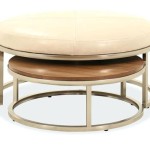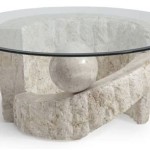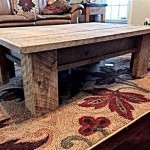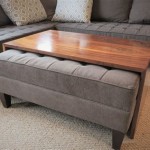Refinishing a Wood Table Without Sanding: A Step-by-Step Guide
Restoring the beauty of your worn-out wood table doesn't always require the laborious task of sanding. With a few clever techniques and the right materials, you can achieve a stunning refinished look without the hassle of removing the old finish.
Step 1: Cleaning the Table
Start by thoroughly cleaning the table to remove any dirt, grease, or old wax buildup. Use a mild dish soap and warm water solution and a soft cloth. Rinse the table with clean water and let it dry completely.
Step 2: Preparing the Surface
Once the table is dry, you need to prepare the surface for the new finish. If the existing finish is particularly durable, you may want to roughen it up slightly using fine-grit sandpaper or a deglosser. This will help the new finish adhere better.
Step 3: Removing the Old Finish (Chemical Stripping)
If your table has a thick or multiple layers of finish, it's best to use a chemical stripper. Apply the stripper liberally to the surface and let it sit for the recommended time, typically 15-30 minutes. The stripper will soften and loosen the old finish, making it easier to remove.
Step 4: Scraping and Cleaning
Using a plastic scraper, carefully remove the softened finish. Work in sections, scraping along the grain of the wood to avoid damage. Once most of the finish is removed, wipe down the table with mineral spirits to dissolve any remaining residue.
Step 5: Neutralizing the Surface
To neutralize the chemical stripper and prepare the surface for finishing, wipe it down with water mixed with a small amount of vinegar. Let the surface dry completely.
Step 6: Applying New Finish (Gel Stain or Polyurethane)
Now it's time to apply the new finish. For a darker, richer look, use a gel stain. Apply it with a clean cloth or brush, working with the grain of the wood. Once the gel stain has dried thoroughly, apply a polyurethane finish to protect the wood and enhance its durability. Use a soft brush or cloth to apply the polyurethane evenly, and allow it to dry according to the manufacturer's instructions.
Step 7: Finishing Touches
To complete the refinishing process, apply a protective wax or furniture polish to the table. This will help preserve the finish and give your table a beautiful shine. Buff the table with a clean, soft cloth to remove any excess polish.
Tips for Refinishing Without Sanding
*Choose the right stripper:
Not all strippers are created equal. Some are specifically formulated for removing multiple layers of finish, so make sure to read the labels carefully. *Work in a well-ventilated area:
Chemical strippers release fumes, so it's important to work in a well-ventilated area with proper safety gear, including gloves and a mask. *Test the stripper on an inconspicuous area first:
This will help you determine the appropriate amount of time to leave the stripper on and ensure it doesn't damage the wood. *Be patient:
Removing the old finish can be a time-consuming process, but it's worth the effort for a beautiful refinished table. *Protect the surface:
Once the table is refinished, protect it from spills and scratches by using coasters and placemats.
How To Refinish A Dining Table Without Stripping The Original Coat

Refinish Furniture Without Stripping

How To Refinish A Table Without Sanding Or Stripping Refinishing Furniture Fix Projects

Refinish Wood Furniture Without Stripping It The Perfect Beginner Up Cycle Design Morsels

How To Easily Paint Furniture Without Sanding The Secret A Smooth Job

How To Remove Stain Without Sanding Confessions Of A Serial Do It Yourselfer

How To Refinish A Table That Is Not Real Wood Entri Ways

How To Refinish A Dining Table Without Stripping The Original Coat

It S Worth The Hype How To Refinish Wood Without Sanding

How To Restain Wood Without Stripping So Simple Artsy Rule
Related Posts








